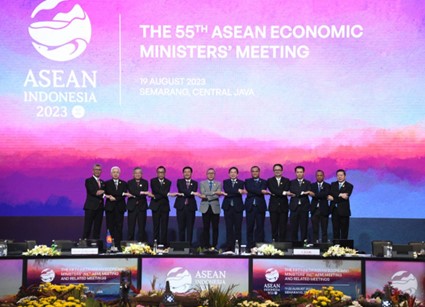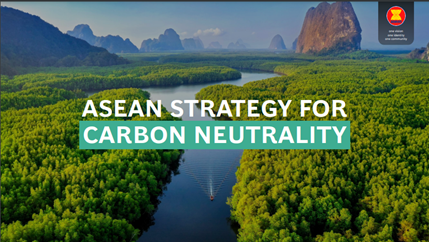Total number of posts 460.
At the 55th ASEAN Ministerial Meeting held on August, 2024 in Semarang, Indonesia ASEAN Economic Ministers have endorsed the ASEAN Strategy for Carbon Neutrality, a groundbreaking initiative aimed at driving the region toward a sustainable, carbon-neutral future. This strategy aligns with member states' commitments under the Paris Agreement and highlights the immense economic benefits of green transformation.

The 55th ASEAN Economic Ministers’ Meeting adopted the ASEAN Strategy for Carbon Neutrality
Addressing Urgent Climate Risks
ASEAN is one of the regions most vulnerable to climate change, with five of the 20 most at-risk nations located in Southeast Asia. Without significant and immediate intervention, climate change could slash the region's GDP by 11% by 2100 and displace 87 million people in flood-prone areas across Indonesia, Malaysia, Myanmar, Thailand, and Vietnam.
The new strategy seeks to not only mitigate these risks but also unlock massive economic opportunities. According to a study by the Boston Consulting Group, ASEAN’s transition to carbon neutrality by 2050 could generate $3.0 to $5.3 trillion in GDP, attract $3.7 to $6.7 trillion in green investments, and create 49 to 66 million jobs.
Economic Impact Across Member States
The economic uplift from carbon neutrality is expected to be broad-based but varied by country. Cambodia, Laos, Myanmar, and Vietnam stand to gain the most, with GDP increases of 9% to 12% by 2100. Middle-income countries such as Indonesia, Malaysia, the Philippines, and Thailand are projected to see a 4% to 7 % rise, while high-income members like Singapore and Brunei will experience more modest gains of 1% to 2%.
Leveraging ASEAN's Strengths
Although ASEAN must bridge a significant 2.6-gigatonne CO2 emissions gap to achieve carbon neutrality, the region benefits from relatively low per capita emissions—3.9 tonnes of CO2, compared to the global average of 4.8 tonnes and far below levels in China (7.1 tonnes) and the United States (14 tonnes).
Moreover, ASEAN’s growing profile as an attractive investment destination enhances its ability to support green initiatives. Total investment in the region is expected to grow at a compound annual rate of 12%, doubling from $962 billion in 2023 to more than $2.1 trillion by 2030.
ASEAN’s diverse economies present unique strengths to drive the transition. Hydropower-rich countries can provide renewable energy, resource-rich countries can provide materials for green technologies like nickel batteries, and industrial hubs can focus on electric vehicle (EV) manufacturing.

Eight Key Strategies for Carbon Neutrality
To complement national efforts, the ASEAN Strategy for Carbon Neutrality identifies eight areas for regional cooperation:
1. Integrating green value chains
2. Developing circular economy supply chains
3. Enhancing green infrastructure and market connectivity
4. Creating interoperable carbon markets
5. Establishing credibility and harmonized standards
6. Attracting and deploying green investments
7. Building green talent and fostering mobility
8. Sharing best practices in sustainability
The strategy includes 16 initiatives tailored to the varying needs and resources of member states, laying the foundation for a collaborative and inclusive carbon-neutral transition.
A Transformative Path Ahead
The ASEAN Strategy for Carbon Neutrality represents a bold shift in the region's economic priorities, going beyond traditional integration efforts to position ASEAN as a leader in sustainability. Based on this strategy, ASEAN countries are developing regional action plans and specific collaborative activities to realize the strategy, aiming for a carbon-neutral future and shared prosperity.
|
Carbon neutrality is a state where the amount of carbon dioxide (CO2) emitted into the environment is balanced by the amount of CO2 absorbed or removed from the atmosphere. The goal of carbon neutrality is to mitigate the impacts of climate change through measures such as reducing emissions, investing in renewable energy, and implementing environmental projects to offset carbon emissions. At the same time, carbon neutrality promotes sustainable development, creates new economic opportunities, fosters technological innovation, and generates additional jobs. This is a complex and multidimensional issue that requires collaboration among various stakeholders and continuous innovation to develop more effective strategies in the fight against climate change. Vietnam has committed to achieving carbon neutrality and Net Zero by 2050. In the Resolution of the 13th Party Congress, the country identified greenhouse gas emission reduction as one of its top priorities, supported by a range of specific policies and action plans. |













